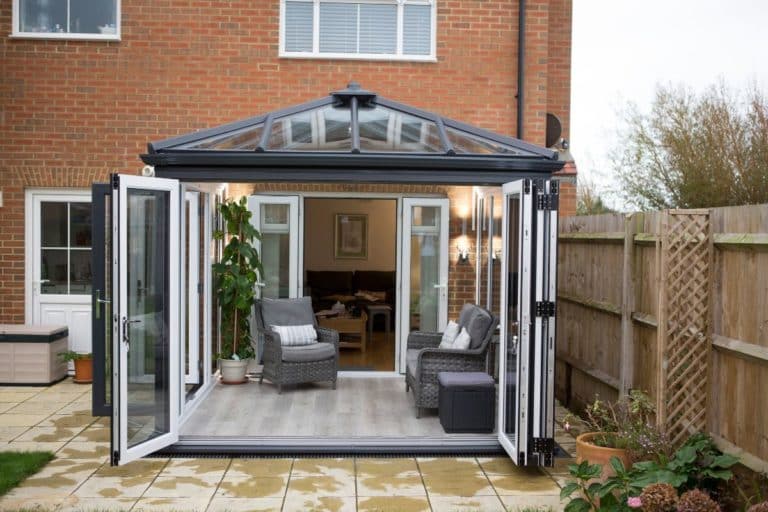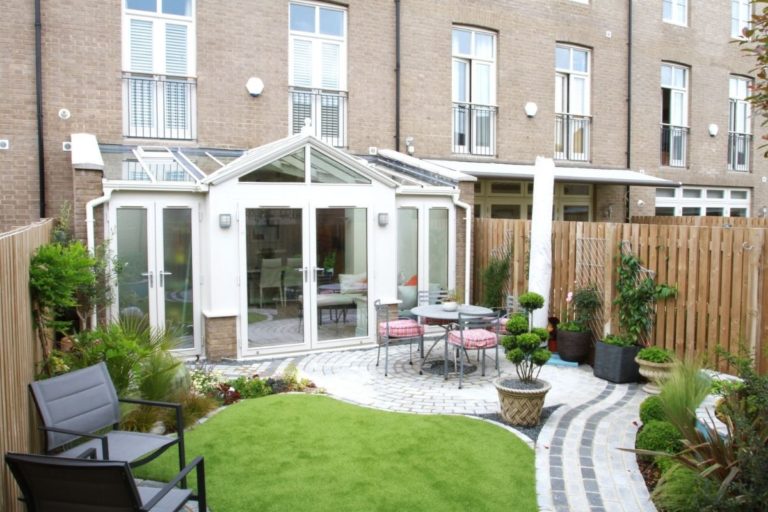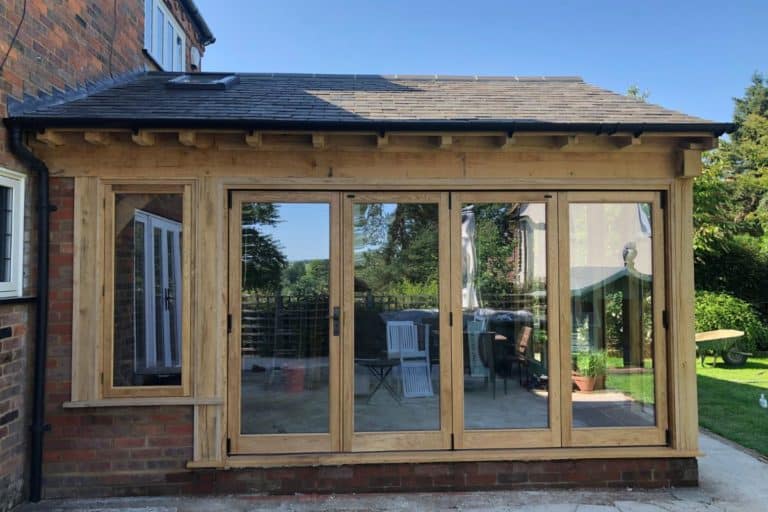We love spending time in our homes and gardens in the UK. With more people choosing to improve rather than move, adding a glass or solid extension is a fantastic way to create extra space, add style, and increase your home’s value.
There are four main options to consider:
- Conservatory
- Orangery
- Frameless Glass Box
- Traditional Extension
Each has its own unique style and benefits. But what is the difference between a conservatory and orangery, and which one is right for you?
Glass Extension Options
What is the difference Between a Conservatory and an Orangery?
The main difference between an orangey and a conservatory is the roof. A conservatory has at least 75% of the structure covered in a glass roof, but more usually the entire roof is made of glass. An orangery traditionally has a flat solid roof with a glass lantern in the centre to let in light. Although there are other features that distinguish between the two types, the roof is the deciding factor when categorising glass extensions. A traditional extension will have a solid roof, sometimes with skylight windows included to lighten the room.
What Is a Conservatory?
A conservatory is a popular choice for homeowners looking to create an extra Room Outside. It typically features glass walls and a glass roof, connecting seamlessly to the back or side of your home.
- Best for: Creating a light-filled space to dine, relax, and enjoy the garden.
- Modern comfort: Older conservatories were too hot in summer and too cold in winter, but temperature-controlled glass now ensures a comfortable climate all year round.
- Customisation: Available in hardwood, aluminium, or PVCu frames with a variety of colour and finish options.
- Planning permission: Often not required, but always check before starting your project.
A conservatory is a cost-effective and quicker way to add space and value to your home.

What Is an Orangery?
An orangery dates back to the 17th century when it was originally used to grow plants during winter. Today, it is a stylish alternative to a conservatory that feels more like a permanent extension of your home.
- Best for: Expanding kitchens, dining areas, or creating a luxurious living space.
- Structure: Built with a solid brick base, large windows, and a lantern roof to let in natural light.
- Standalone option: Can also be built as a separate structure in the garden, ideal for a summer house or guest accommodation.
- Flexible design: Features like bi-fold doors can open the space up to the garden.
An orangery offers a more integrated look than a conservatory and blends beautifully with the existing home design.

What Is a Frameless Glass Box Extension?
A glass box extension is the ultimate modern luxury extension. It is made entirely of structural glass, including the roof, providing an uninterrupted view of the outdoors.
- Best for: A sleek, contemporary space that maximises natural light.
- Versatile uses: Can be attached to a home, used to connect two buildings, or cover a courtyard or balcony.
- Advanced technology: Uses specialist temperature-controlled glass to maintain comfort in all seasons.
- Planning permission: Often not required, but size and design may affect approval.
While a glass box extension is typically the most expensive option, it creates a truly show-stopping feature in any home.
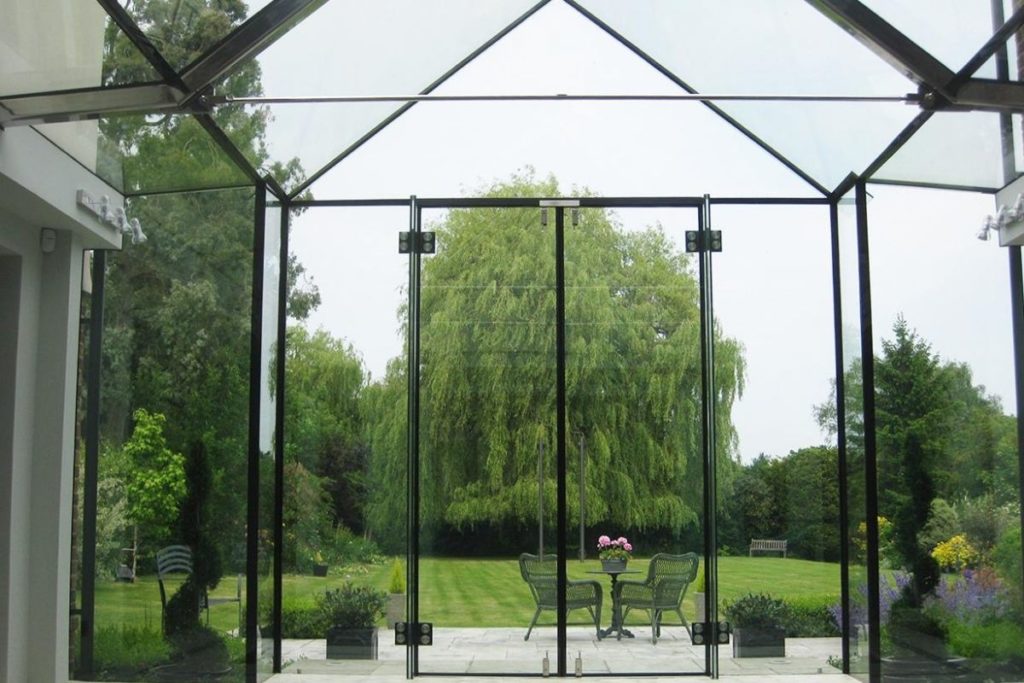
What Is a Traditional Extension?
A traditional solid extension is a permanent addition to your home, used to create larger kitchens, living areas, home offices, or additional bedrooms and bathrooms.
- Best for: Homeowners needing substantial extra space on one or more floors.
- Structure: Built with fully insulated walls and either a solid or skylight roof.
- Planning permission: Usually required, as well as building regulation approval.
- Timeline & cost: A larger, more complex project requiring multiple contractors.
A traditional extension offers maximum flexibility but involves longer construction times and a higher cost compared to glass-based extensions.
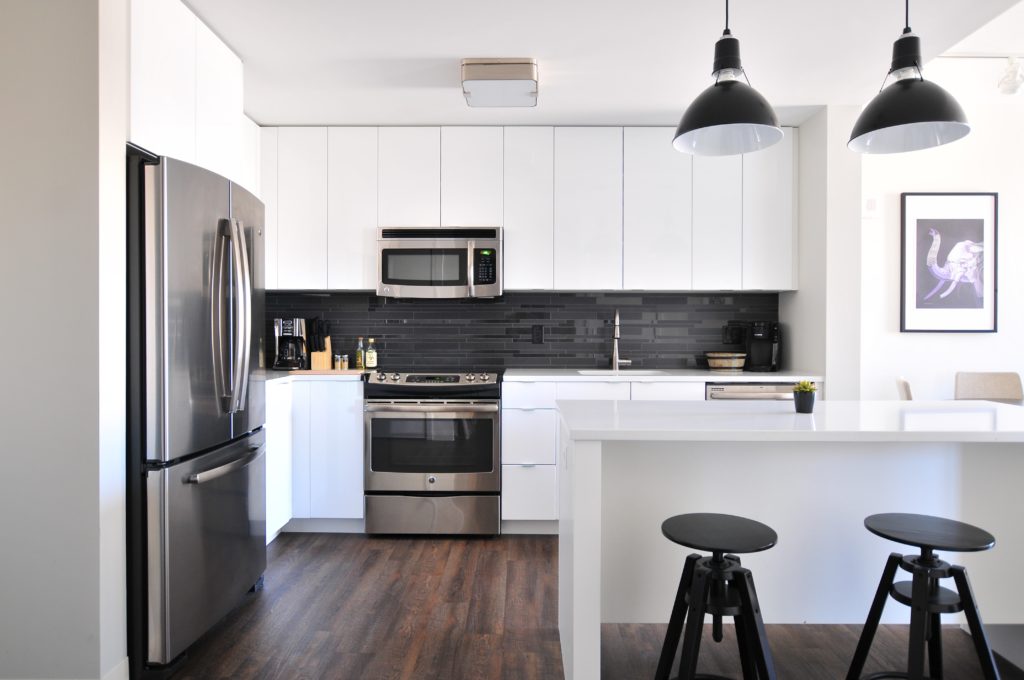
Which Option is Right for You?
The best choice depends on your goals, budget, and design preferences.
- Want a bright, open space? → Choose a conservatory.
- Prefer a more integrated, solid structure? → An orangery is ideal.
- Looking for ultra-modern design? → A glass box extension is the way to go.
- Need significant extra space? → Consider a traditional extension.
To help make the right decision, start by:
- Writing down your must-haves and budget.
- Collecting inspiration from magazines, Pinterest, or home improvement websites.
- Getting expert advice from trusted conservatory and extension specialists.
Get Expert Advice for Your Glass Extension
Not sure which option is right for you? Don’t navigate the options alone!
Contact Room Outside today to book a free, no-obligation consultation with one of our specialist designers. We’ll provide expert guidance, inspiration, and a detailed quotation to bring your vision to life.

